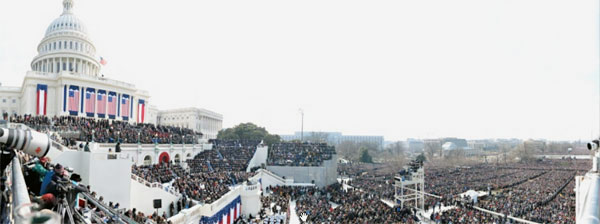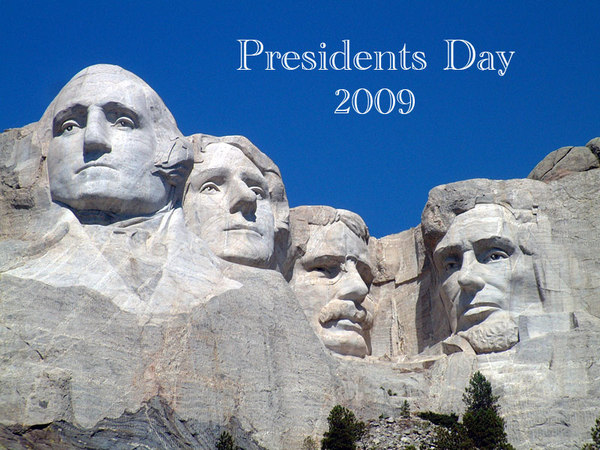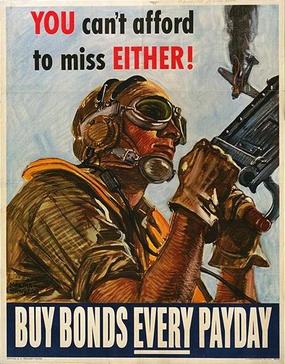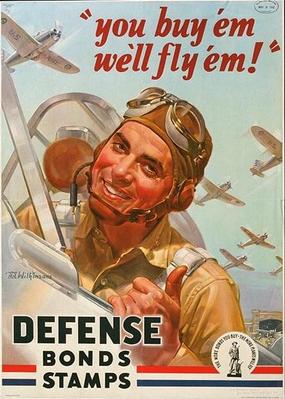Entries in History (54)
Capitalism and Freedom
In his book “Capitalism and Freedom” (1962) Milton Friedman (1912-2006) advocated minimizing the role of government in a free market as a means of creating political and social freedom. Friedman was perhaps our country’s leading economist. Here’s an excerpt from a 1979 interview with Phil Donahue:
Those basic principals of sound economics stand in sharp contrast to the big government in store for us today. It pains me to see how far we as a nation are straying from the basic philosophy of capitalism. I hope we see the error in our ways before it’s too late.
Amazing Gigapan Image
Professional photographer David Bergman made this giant panoramic image showing the nearly two million people who watched President Obama’s inaugural address at the U.S. Capitol in Washington, DC on January 20, 2009. Taken from the north press platform, it’s made up of 220 Canon G10 images. The original image size is 59,783 X 24,658 pixels or 1,474 megapixels. This new version is 56,646 X 27,788 or 1.57 gigapixels.
To make the image, David clamped a Gigapan Epic Imager to the railing on the north media platform about six feet from his photo position. The Gigapan Epic is a robotic camera mount that allows him to take multiple images and stitch them together, creating a massive image file. It took more than six and a half hours for the Gigapan software to stitch together all of the images on David’s Macbook Pro, and the completed TIF file is almost 2 gigabytes.
Click on the image above, then use the controls to zoom and pan around the photo. You can also double click to zoom in and double click again to get even closer. If you zoom way in, you’ll note that Supreme Court Justice Clarence Thomas is not sleeping, President Bush is not sending a text message, and Oprah Winfrey is blocked by a camera tower. Look more closely and you’ll see Yo-Yo Ma taking a picture with his iPhone. David says he’s still looking for Waldo.
Happy Washington's Birthday 2009
Today is Presidents Day, at least in California. It falls, awkward and confusing, on the federal holiday designated by our federal government as Washington’s Birthday. It’s also a day off from work for many of us, so IM is closed today. I posted information about the holiday’s origin and history last year, so rather than my revisiting the subject, follow this link to that article. Have a wonderful holiday!
WWII Posters - 2
We talked briefly last week in Part 1 of this series about War Bonds but I’d wager that many of you have never seen one. They looked a lot like regular savings bonds, didn’t they.
Although they were stamped “War Savings” bonds, they were actually U.S Series E Savings Bonds, first issued earlier in 1941 in an effort to control inflation. After our formal entry into the war in December of that year, they became known as “War Bonds”. Also known as “war loans” and “victory bonds”, they appealed to our sense of patriotism.
Popular contemporary art was used to help promote the bonds. Norman Rockwell’s painting series Four Freedoms toured in a war bond effort that raised $132 million. Some of his Willie Gillis paintings and his Rosie the Riveter painting were raffled off during the United States Department of the Treasury’s Second War Loan Drive.
The music industry got on board with songs and campaigns like the song (and animated short), Any Bonds Today?. The Music Publishers Protective Association encouraged its members to include patriotic messages on the front of their sheet music like “Buy U.S. Bonds and Stamps”. Band leaders and celebrities held rallies where they encouraged the public to help their country by buying war bonds.
Although they were initially marketed as war bonds, Series E Savings Bonds were offered by the U.S. government until June 1980 when they were replaced by the Series EE bond.
To be continued…
WWII Posters - 1
WWII Posters played an important roll during WWII, helping mobilize the nation. Inexpensive, accessible and ever-present, the poster was an ideal agent for making war aims the personal mission of every citizen. Government agencies, businesses and private organizations issued an array of poster images linking the military front with the home front—calling upon every American to boost production at work and at home.
Deriving their appearance from the fine and commercial arts, posters conveyed more than simple slogans. They expressed the needs and goals of the people who created them. I was just a kid then, but I remember seeing many of them, still hanging in garages and plants long after the war ended. They represented a way of life, a collective spirit to do what was necessary to win the war and bring our boys home.
Cousin Mike emailed a collection of such posters to me the other day and I thought I’d share some of them over the next few weeks. I wonder how we’d respond today if asked to make such a commitment to the war effort. (Click to enlarge)
Above: The Treasury Department financed the war through the sale of bonds and stamps to the public. War bond posters called upon all citizens to share in “ownership” of the war.
To be continued…
Barack Obama - 44th President of the United States
Barack Obama was sworn in this morning as the 44th President of the United States of America and the first African American president in our young history. To call it an historic event would be an understatement. The complexion of our nation has changed forever and, in that respect, it’s a good thing. Most would argue it’s been long overdue.
In his inaugural address, he emphasized that we - all of us - must become part of the solution to America’s problems and that we’ll need to “sacrifice”. That’s the part that I wish he’d fleshed out. I’m a believer in descriptive sentences; generalizations leave me wondering. So I have some trepidation about exactly what sacrifices he means. Is he telling us to grin and bear higher taxes to support bigger government? The question looms like a gorilla in the proverbial room.
But for the moment, I’m trying to remain positive, even (dare I say it?) “hopeful” that he will guide the Congress and our nation back to prosperity. And I think everyone is on board with that. Time will tell. I think he’s a good man; it’s some of those who surround him that worry me.
I’ve linked to a transcript of the speech so you can dissect it as you wish. The cost of this inauguration - some are calling it a coronation - dwarfs by several times any in our history. That seems odd, if not inappropriate, considering these shaky financial times. But that’s fodder for another post and another day. Like I said, today I’m positive.
A Christmas Tale - 1919
My mother-in-law clipped this article from the Wall Street Journal for me and I thought it well worth sharing. I realize it’s after Christmas — and it’s a little long by blog standards — but I promise you’ll find reading it worth your time…
A Christmas Tale - 1919
by Hans von Spakovsky
It’s easy to complain in the midst of a stressful holiday season. But my family has a unique remedy: We remember one special Christmas in 1919 that gave us the freedom and liberty we enjoy today. This will be the 89th anniversary of the year my father celebrated Christmas Eve deep in the snow-laden woods of Russia as he fled the Communist takeover of his homeland.
When I tell people that my father was an officer in the White Army who fought the Bolsheviks in the Russian civil war, they usually look at me with disbelief, because I am only 49. But he married and started a family later in life, after he lived through both world wars.
He had been an officer in the Russian Army in World War I; after the Bolshevik putsch he ended up fighting against them in the far north of Russia. In 1919 he was close to the Arctic Circle in the port city of Arkhangelsk, where at the beginning of the year, six feet of snow fell and the temperature was regularly 30 degrees below zero.
The Allies — the English, Americans and French — had put military forces in Russia, including in Murmansk and Arkhangelsk, in 1918. When they withdrew in September 1919, the White Army forces faced dire peril: Their source of supplies, including arms, was gone. Many regular soldiers deserted en masse to the Bolsheviks.
As the situation deteriorated, my father and his unit were surrounded. They fought until very few supplies remained. By December, their commander told them that they would soon be unable to continue to fight and that the Bolsheviks had promised that surrendering White forces would be freed and sent home.
But my father knew that the communists shot the officers they captured. The only way he could escape was through the frozen White Sea on the lone icebreaker in the port, which was not large enough to evacuate everyone. Only a small number of high-ranking White Russian officers eventually fled that way.
One woman and 16 men, including my father, decided they would try to get out another way. In the middle of a very snowy night, they skied through the Bolshevik lines toward Finland. As my father later told his five children, it was an arduous and long journey. They had so little food that at one point they were reduced to eating the beeswax candles they carried with them…
The Yule Log
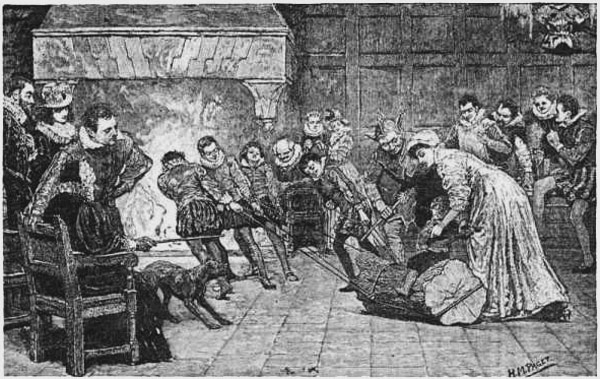
The burning of the Yule log is an ancient Christmas ceremony transmitted to us from our Scandinavian ancestors who, at their feast of Juul at the winter solstice, kindled huge bonfires in honor of their god, Thor. The custom, though sadly shorn of the pomp and circumstance which formerly attended it, is still maintained in various parts of the world.
The bringing in and placing of the ponderous block on the hearth of the wide chimney in the baronial hall was the most joyous of the ceremonies observed on Christmas Eve in feudal times. The venerable log, destined to crackle a welcome to all-comers, was drawn in triumph from its resting place at the feet of its living brethren of the woods.
Each wayfarer raised his hat as it passed, for he well knew that it was full of good promises, that its flame would burn out old wrongs and hearthurnings and cause the liquor to bubble in the wassail-bowl to be quaffed to the drowning of ancient feuds and animosities. So the Yule-log was worthily honored and the ancient bards welcomed its entrance with their minstrelsy.
The half-consumed block was laid aside after having served its purpose on Christmas Eve, preserving it carefully in a cellar or other secure place till the next anniversary of Christmas and then lighting the new log with the charred remains of its predecessor. The due observance of this custom was considered of the highest importance, and it was believed that the preservation of last year’s Christmas log was a most effectual security to the house against fire.
Excerpts from Chambers’ Book of Days.
Giving Thanks - The First Thanksgiving
Dawn and I have a great deal to be thankful for, so making “thanks” a big part of our Thanksgiving is important to us. And a great way to begin is to remember and reflect upon how it all began.
We learned in school that the first Thanksgiving in Plymouth, Massachusetts, starred the Pilgrims, Squanto and the friendly Wampanoag tribe led by Massasoit, who celebrated a bountiful harvest and the promise of making it through the harsh New England winter. But here are some lesser-known facts about that first Thanksgiving in 1621:
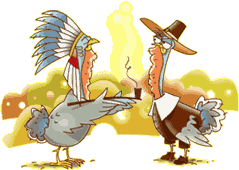 Squanto was a Patuxet Indian who almost single-handedly saved the first Pilgrims from starving to death. He taught them how to catch eels and trap fish during their spring run, plant corn and pumpkins and trap beavers. He helped the Pilgrims despite having been captured and sold into slavery by an English sea captain. According to Peter Marshall and David Manuel in The Light and the Glory, Squanto was shipped to Malaga, Spain, where he was rescued by local friars, and eventually returned to Plymouth, where he discovered not one member of his tribe was left alive.
Squanto was a Patuxet Indian who almost single-handedly saved the first Pilgrims from starving to death. He taught them how to catch eels and trap fish during their spring run, plant corn and pumpkins and trap beavers. He helped the Pilgrims despite having been captured and sold into slavery by an English sea captain. According to Peter Marshall and David Manuel in The Light and the Glory, Squanto was shipped to Malaga, Spain, where he was rescued by local friars, and eventually returned to Plymouth, where he discovered not one member of his tribe was left alive.
During that first Thanksgiving celebration, the Wampanoags brought fat wild turkeys to the feast and introduced the Pilgrims to a local delicacy called popcorn. Next time you enjoy some at the movies, thank the Wampanoags, not Orville Reddenbacher.
They celebrated that first Thanksgiving in October, not November. In 1941, Congress issued a national proclamation setting our observance of Thanksgiving on the fourth Thursday of November.
During the winter of 1621-22, an influx of new settlers eventually forced the pilgrims to each live on a daily ration of five kernels of corn. At the following Thanksgiving, Marshall and Manuel noted, “the first course was served ‘…on an empty plate and in front of each person were five kernels of corn… lest anyone should forget.’”
We have a lot to be thankful for, as did those first pilgrims. And for all its faults, we live in a country where we can write, speak and worship freely, and where we can attempt to right wrongs without being thrown in jail or exiled. Solomon wrote, “Where there is no vision, the people perish.” Well, where there is no thankfulness, people sour, slowly, like leftover cranberry sauce. We need Thanksgiving, if for no other reason than to remember that, while there may be only five kernels of corn on our plate, there are still five, and the promise of harvest is only a season or two away.
The Worst Hard Time
I don’t know how we missed this Timothy Egan book in 2006 when it was first published, but after starting it last night, we’re hooked. The Worst Hard Time is the epic story of the dust storms that terrorized America’s High Plains in the darkest years of the Depression and the families who stayed and survived the choking dust of our nation’s greatest natural disaster, the “dirty thirties”. From the Introduction:
On those days when the wind stops blowing across the face of the southern plains, the land falls into a silence that scares people in the way that a big house can haunt after the lights go out and no one else is there. It scares them because the land is too much, too empty, claustrophobic in its immensity. It scares them because they feel lost, with nothing to cling to, disoriented. Not a tree, anywhere. Not a slice of shade. Not a river dancing away, life in its blood. Not a bump of high ground to break the horizon, give some perspective, spell the monotone of flatness. It scares them because they wonder what is next. It scared Coronado, looking for cities of gold in 1541. It scared the Anglo traders who cut a trail from Independence to Santa Fe, after they dared let go of the lifeline of the Cimarron River in hopes of shaving a few days off a seven-week trek. It even scared some of the Comanche as they chased bison over the grass. It scared the Germans from Russia and the Scots-Irish from Alabama — the Last Chancers, exiled twice over, looking to build a hovel from overturned sod, even if that dirt house was crawling with centipedes and snakes, and leaked mud on the children when thunderheads broke.
It still scares people driving cars named Expedition and Outlander. It scares them because of the forced intimacy with a place that gives nothing back to a stranger…
History, delivered as though in a novel you don’t want to put down. I find myself stopping to re-read paragraphs, to draw in a melodic phrase or colorful description, marveling at the perfect choice of words and hoping to remember how they were woven, all the while discovering how little I really knew about this part of our history and the very real people who lived it.
I don’t usually recommend a book before finishing it, but this may well be the exception.
2008 Pebble Beach Concours d'Elegance
This Sunday marks the 58th anniversary of the Pebble Beach Concours d’Elegance – the world’s premier celebration of the automobile. It’s held each August at the Lodge, on what is often called the best finishing hole in golf, the 18th green at Pebble Beach overlooking Monterey Bay. I haven’t been the last few years, but this used to be an event I rarely missed.

Only 175 of the most prized collector cars in the world are invited to participate in this very competitive event, and to win in its class is an affirmation that the car is the best example of its breed.
The featured marques for the 2008 Pebble Beach Concours d’Elegance will be the Lancia, Lamborghini and the General Motors centennial. Of special interest will be the return of a 1934 Packard V12 Convertible Victoria. In 1955, San Francisco police officer Marvin Zukor drove the car 100 miles down the California coast to participate in the third Pebble Beach Concours d’Elegance. On August 17th, fifty three years later, Zukor and his Packard will compete again in the Concours!
Tickets and information about the Pebble Beach Concours d’Elegance - and the events leading up to it - are available here and on their website. To buy one of these rare automobiles, start here. I like the 2009 Bugatti Veyron 16.4 Grand Sport. (Hey, window shopping is free!)
Remembering VJ Day
Today commemorates the 63rd anniversary of VJ Day. At 6:10 p.m. EDT on August 14, 1945, the United States received word of Emperor Hirohito’s surrender and declared Victory in Japan - VJ Day - effectively ending WWII. As the news spread, celebrations began throughout the world.

One of the most famous photographs ever published by Life - VJ Day in Times Square - was shot on August 14th, 1945. Alfred Eisenstaedt was in the square taking candids when he spotted a sailor “running along the street grabbing any and every girl in sight,” he later explained. “I was running ahead of him with my Leica looking back over my shoulder… Then suddenly, in a flash, I saw something white being grabbed. I turned around and clicked the moment the sailor kissed the nurse.”
The participants in the kiss were never confirmed by Eisenstaedt, whose notes on the photo were not found until after his death in 1995. Life, however, accepted nurse Edith Cullen Shain’s claim to the honor in a handwritten letter to Eisenstaedt 35 years later. Shain was 27 on VJ Day.
Over 20 men have claimed to be the sailor but none has been positively identified. In August 2005, a team of volunteers at the Naval War College claimed the sailor was George Mendonça of Newport, Rhode Island. And Shain once said she believed the man to be former New York City police detective Carl Muscarello, although she later recanted that statement.
But Houston Police biometrics expert Lois Gibson pegged the sailor in the picture as Glenn McDuffie after conducting a thorough forensic analysis in which she conclusively identified McDuffie and excluded Mendonça and Muscarello.
Billy the Kid?
 I’ve always been fascinated by the Old West and its legendary heroes and outlaws. So my interest was peaked when I read this at Ancestry.com.
I’ve always been fascinated by the Old West and its legendary heroes and outlaws. So my interest was peaked when I read this at Ancestry.com.
It appears this census taker caught Billy the Kid (alias William Bonney) and his comrade Charles Bowdre in Fort Sumner, New Mexico, in 1880. Bowdre was killed at nearby Stinking Springs later that year; Billy was killed at Fort Sumner the year after.
Imagine that. Wanted by the law, yet giving his name to the census taker. Perhaps not the wisest decision of his short-lived career…
Happy Lammas 2008
This is a repost. Not much I can add to last year’s entry, so…

Today is Lughnasadh, or Lammas, half-way between Summer Solstice and Autumn Equinox. For many it represents “sweet corn harvest time… when Summer leans back and watches her abundance roll out.”
Michael says it’s “from the Old English hlaf (loaf) and maesse (mass or feast) and is very old indeed.” It derives, he tells me, “from the ancient English festival the Gule of August, which marked the beginning of the harvest, traditionally August 1. The early English church kept this pagan dedication of the first fruits but converted it to Christian usage. Through the centuries, loaf-mass became corrupted in spelling and pronunciation to Lammas. On Lammas Day, loaves of bread were baked from the first-ripened grain and brought to the churches to be consecrated.”
In Scotland, “Lammastide fairs became famous as the time when trial marriages could be made. These marriages could end after a year with no strings attached.” Wilson’s Almanac offers a lot more information and history if you’re so inclined.
Whatever its origin, it’s celebrated by relatively few in this country. I’m thinking we should follow the Scots’ lead and celebrate with good food, good drink and good fellowship. And maybe some dancers. And that “trial marriage” thing might be a nice touch…
Geometrically Impossible
For the mathematicians among you…





